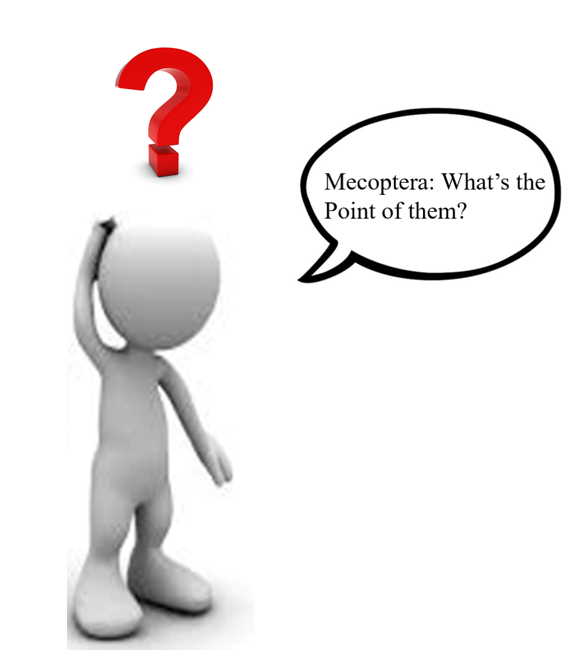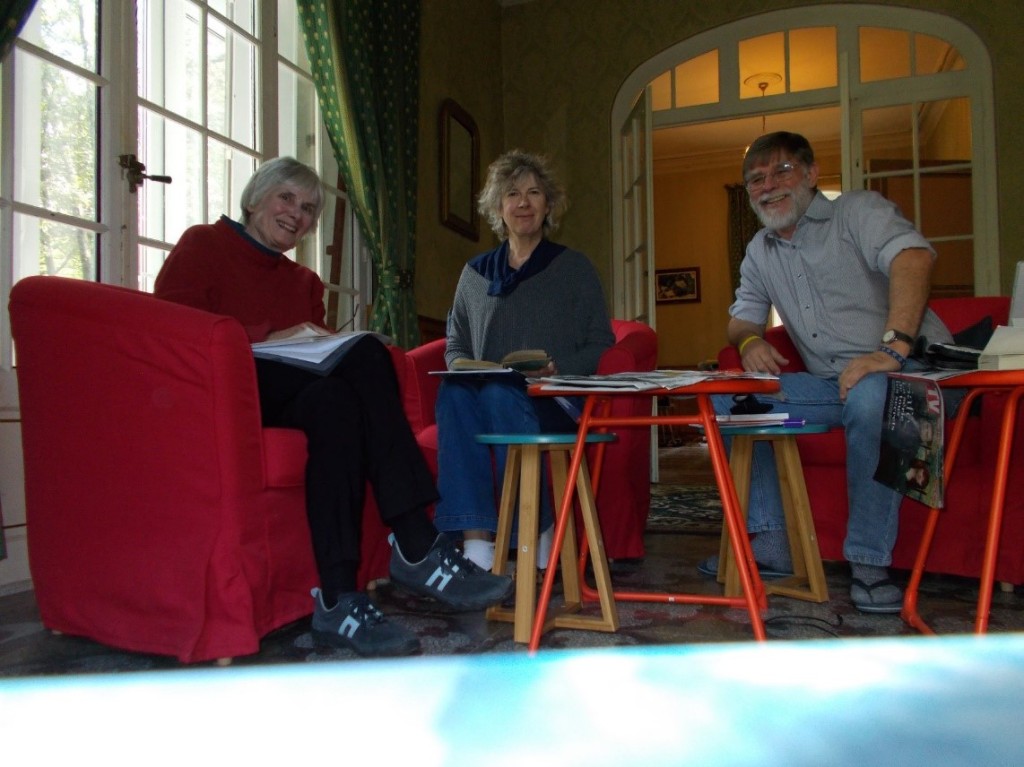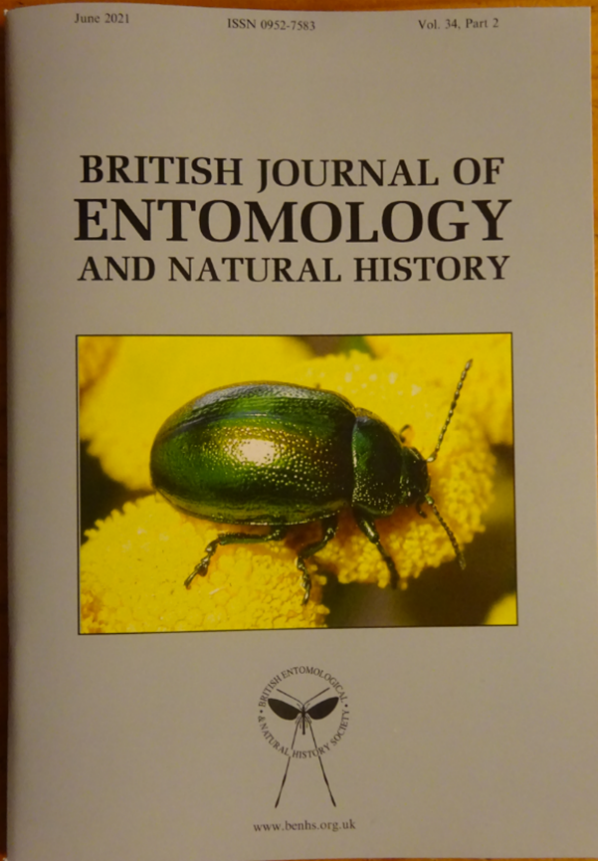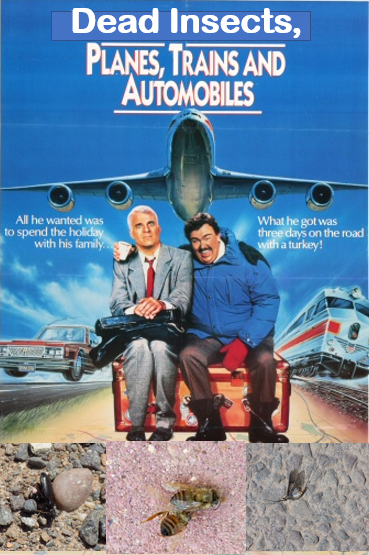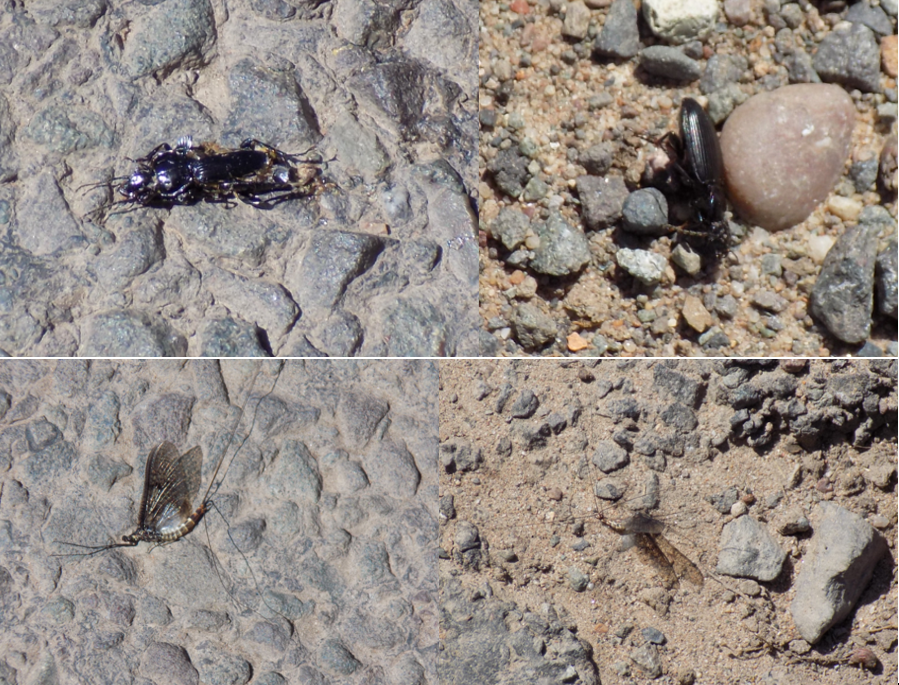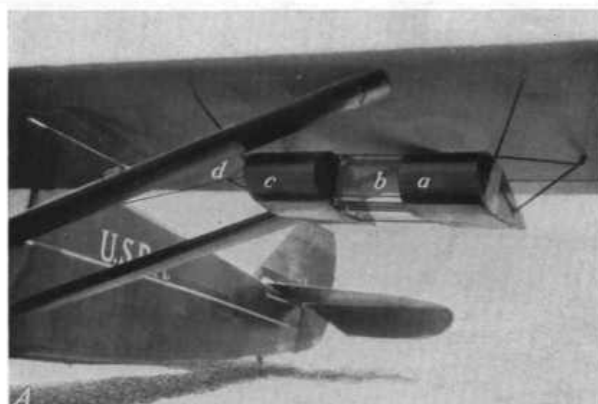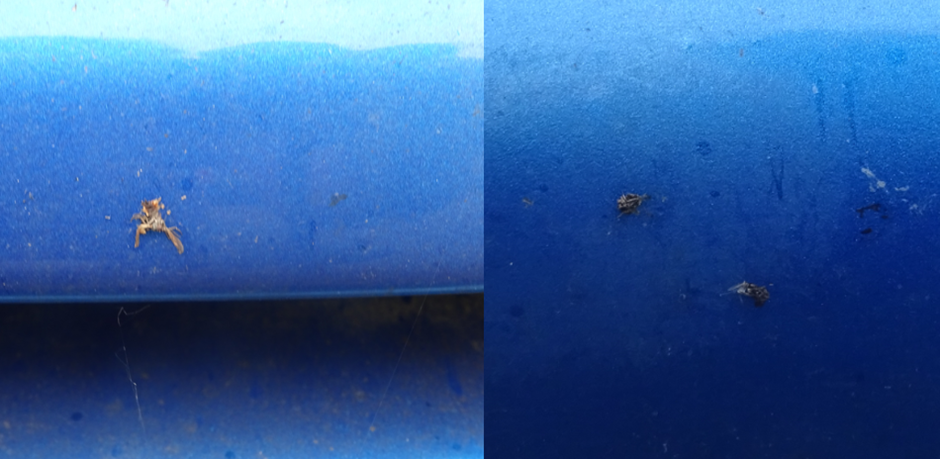The book!
I have written a lot of papers (more than 220 according to Web of Science) and quite a few books, two real ones (Leather et al., 1993; Leather & Bland, 1996) and eight edited volumes, over the last forty odd years. Up until now I thought the most exacting piece of writing I had ever done was my entry for the Biological Flora (Leather, 1996). I mention this because it has a very similar feel to my most recent, most difficult piece of writing, Insects, A Very Short Introduction.
I did my PhD on the bird cherry aphid, Rhopalosiphum padi (Leather, 1980) during which I developed a real love for the bird cherry tree, Prunus padus. Just to illustrate this, my second son’s middle name is Tuomi – Finnish for bird cherry. Over the next decade or so I expanded my studies on to the different insects associated with it and also became quite adept at striking scions, grafting it and manipulating its phenology. I could (and still can), thanks to sampling bird cherry trees in Finland in the depths of winter, identify it in the dark by the smell of the bark 😊 In the mid-1980s, I jumped on to the species-area relationship bandwagon (Leather, 1985, 1986) and discovered the wonderful Biological Flora of the British Isles, hosted by the British Ecological Society. Armed with the arrogance of youth, and obviously at the time, not suffering from ‘imposter syndrome’, I contacted Arthur Willis (the then Editor of the series) and volunteered to write the entry for bird cherry. Pretty cheeky for an entomologist, but hey, both my parents were botanists and me and bird cherry were old pals! Arthur said yes and sent me the instructions for contributors which included all the headings and sub-sections required. It looked pretty straightforward to me; go down the headings, insert the information and write the narrative. Easy peasy lemon squeezy. Or so I very naively thought ☹ I whipped through the headings, filled in the data that I had, wrote the accompanying narrative and posted it off to Arthur. Job done! A few weeks later he returned my manuscript telling me that I was also expected to fill in the missing data gaps with data collected by me, not just leave them blank!
Reality strikes!
So, over the next two years that is exactly what I did. I checked out which mycorrhizae were associated with bird cherry, collected seed and calculated germination rates, sketched the different seedling stages, did NVC surveys at six different sites, characterised the growth structure of the tree and shrub forms and looked at responses to defoliation. I learnt a lot of botany! Arthur was an incredibly helpful editor and without his encouragement I would never have completed the entry. I did, however, turn down Arthur’s suggestion that I do the entry for Prunus avium 😊
In 2018 I was contacted by Latha Menon, a Senior Commissioning Editor for OUP, who wanted to know if I would be interested in writing a book for their Very Short Introduction series, in this case, insects. Having since 1990 grown older and picked up imposter syndrome on the way, I was initially a bit hesitant and asked if it would be possible to have a co-author. Latha was somewhat lukewarm about this, saying that what the series was about was producing an extended essay (35 000 words) for a general audience reflecting the expertise and enthusiasm of the author. I pondered about it and thought, well I’ve been a professional entomologist for more than forty years, and an amateur for my whole life, and taught entomology for more than thirty years, so how hard could it be to write 35 000 words about insects? I have also been blogging for what I have envisaged as a mixed audience since 2012, so surely within my capabilities?
I should have known better
It turns out that you can know too much about insects at the same time as you don’t know enough about them! First, I had to decide on a structure for the essay and also what particular aspects of entomology would leap off the page and grab my readers. Much as I love aphids, other insects would have to feature. The obvious place to start, I thought, would be to look at how our entomology course introduced the subject to new students, so Chapter 1, In the beginning was born. This was actually not that simple as I had to deal with the evolution of insects, their classification, their anatomy, a lot of their physiology, and also why they were and are so successful. Trying to make that not like a series of Wikipedia sections was not easy.
Now to me, one of the things that make insects so spectacular and evinces amazement in non-entomologists, is how good they are at reproducing themselves, hey presto, Chapter 2, Prolific procreators and the need to discuss sexual selection, mating behaviour, courtship, lekking and much more. I had originally planned to cover host selection and life history strategies in this chapter, but found that it didn’t sit very well in that context.
Instead, I moved on to Chapter 3, On the move, which began with the evolution of flight, much, of which, despite my decades of experience, was quite a revelation to me. From flight I moved onto host selection, and the physiology and ecology of specialist and generalist feeding. These first three chapters were the most difficult to write, bearing in mind that my readers need to understand the basics of how insects work to fully grasp the wonder of what insects are actually achieving. I had to rewrite these first chapters three times before my Commissioning Editor, my non-entomologist lay-reader (my wife, a humanities graduate), a botanist colleague and an entomological colleague, were happy with them.
Those chapters behind me, I now felt it was time to move on to those aspects of entomology that had super wow factor, those facts that would make my readers exclaim things like “I didn’t know that” and encourage them to pass them on to their friends and relatives. Heavily influenced by my childhood love of social insects, Chapter 4, Living together, appeared on the scene. As well as talking about the well-known bees, ants and termites, it also gave me the chance to discuss lesser known examples such as dung beetles, social bugs, insect symbionts, insect-plant interactions, and yes, of course, aphids get more than a passing mention😊
The next three chapters are a bit niche, but gave me the chance to launch Chapter 5, Aquatic Insects, into the mix and talk about the importance of freshwater insects and even more excitingly, wax lyrical about the little known truly marine Ocean Skaters, which I first came across on a work trip to Mauritius in the mid-1990s. Judging by what I see on social media platforms, non-entomologists are, in the English vernacular, totally gob-smacked by how insects can pretend to be something else, so this made Chapter 6, Crypsis, mimicry and blatant advertising, an obvious heading. I had a lot of fun with this, but was slightly hampered by the restriction placed by OUP on how many illustrations I was allowed to include, and also sadly not being allowed colour.
To me, the ability of insects to live in very inhospitable conditions, from deserts, to ice caves, to mountain tops and to survive arctic winters and other extreme weather conditions without the benefit of fur coats and cold baths, made Chapter 7, Against the odds, a natural.
I have, over the years, been amazed by how limited many people’s appreciation of the positive economic, social, artistic and health benefits of insects to the human world are (Leather, 2015), hence Chapter 8, The good, the bad and the ugly. Here I dealt with pests, disease vectors, biological control, maggot therapy, pollinators, the role of insects as ecosystem engineers, as waste-disposal specialists and as recyclers.
I began my book by describing the diversity and ubiquity of insects. I discussed their origins and marveled at the ways in which insects have adapted to a wide range of environments and the roles that they play in maintaining ecosystem health. Given that for at least the last twenty years or so, entomologists and ecologists have been warning about the dangers of losing species I felt it fitting to end it by discussing the harm that we are doing to insects and the planet that we, and they, inhabit, and ways in which we might act to halt or reverse our course, if it is not already too late. I finished with a warning, and the hope that we are not too late to stem disaster, Chapter 9, Ecological Armageddon—insects in decline?
It was, primarily due to the fact that at times, for every word I took out, I seemed to add another ten, both one of the most frustrating but also satisfying pieces of writing that I have ever done. I just hope that when it hits the shops, my readers will find as much to enjoy as I have since I first came across insects just over sixty years ago.
References
Leather, S.R. (1980) Aspects of the Ecology of the Bird Cherry-Oat Aphid, Rhopalosiphum padi L., PhD Thesis University of East Anglia, Norwich.
Leather, S.R. (1985) Does the bird cherry have its ‘fair share’ of insect pests? An appraisal of the species-area relationships of the phytophagous insects associated with British Prunus species. Ecological Entomology, 10, 43-56.
Leather, S.R. (1986) Insect species richness of the British Rosaceae: the importance of hostrange, plant architecture, age of establishment, taxonomic isolation and species-area relationships. Journal of Animal Ecology, 55, 841-860.
Leather, S.R. (1996) Biological flora of the British Isles Prunus padus L. Journal of Ecology, 84, 125-132.
Leather, S.R. (2015) Influential entomology: a short review of the scientific, societal, economic and educational services provided by entomology. Ecological Entomology, 40 (Suppl. 1), 36-44.
Leather, S.R. & Bland, K.P. (1999) Insects on Cherry Trees, Richmond Publishing Co, Ltd, Slough.
Leather, S.R., Walters, K.F.A. & Bale, J.S. (1993) The Ecology of Insect Overwintering, Cambridge University Press, Cambridge.












